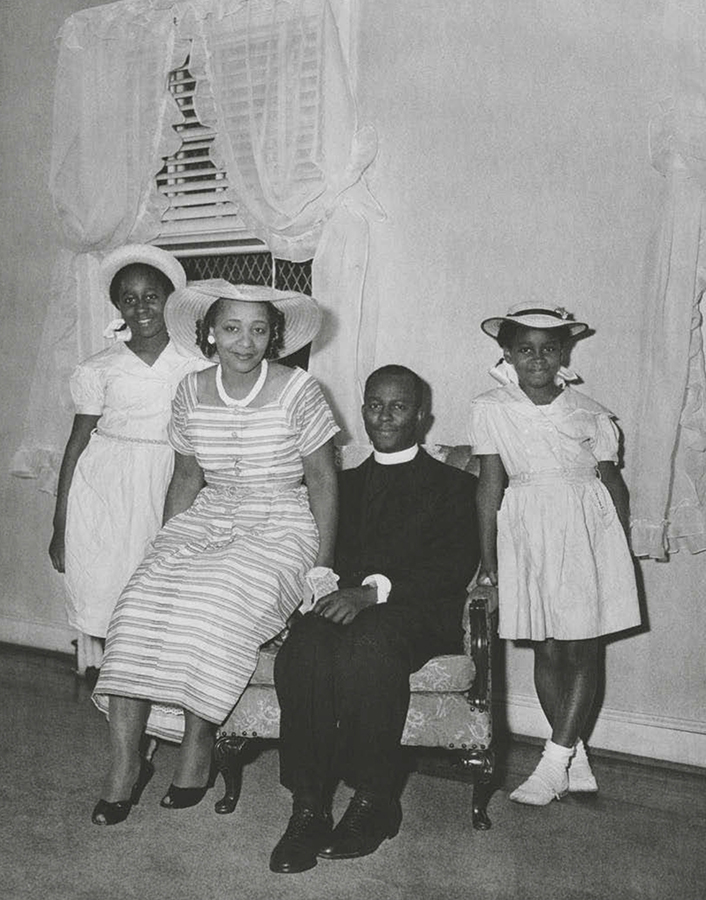
Early 1950s
CAMILLE T. DUNGY
It’s hard to imagine my mother as a child. Even looking at this picture, in which she is a child, she does not seem a child. She seems herself: poised, even a bit regal, fully competent, graceful, loving, and grand. My mother, who couldn’t have been older than eleven when this photo was taken, looks like my mother. The same full, gracious smile, the same beautiful skin, the same bearing. Her shoulder-length hair is pressed and braided into pigtails. She’s wearing a bonnet: the photo must have been taken at Easter time. My mother stands close to her own mother, as she would continue to do for the rest of my grandmother’s life. It wasn’t until her mother had been dead more than a year that my mother finally did what she’d long wanted to do and started to wear her hair in a short-cropped Afro. The style sometimes brings her father into my mother’s face.
I love how close she’s standing to her mother in this photograph. She’s actually set a little bit behind her family. Not like a shrinking violet. Instead, with confident security in her stance. I bet she’d already helped her mother accomplish some administrative task that morning—mimeographing church programs or folding bulletins—or maybe my mother helped get breakfast on the table, so her mother could type the last page of my grandfather’s sermon. Even as a child, I think my mother must have been called upon to complete difficult tasks with a smile.
This photograph was taken in Lynchburg, Virginia, in the years right around 1952. My mother’s family lived in a segregated neighborhood in a segregated town. There were white water fountains and colored water fountains. There were stores in which my mother and her family were not welcome to shop. The church my grandfather pastored was established 110 years before this photo was taken. Between 1879 and 1880, the building where he preached was built by the black laborers who worshiped there. By order of the deed for the building in which the city’s public library was housed, my grandfather wasn’t allowed to use those premises or its collection, so the members of Court Street Baptist Church started a library fund to help my black mother’s black father buy the books he needed to preach the sermons his black parishioners needed to hear every Sunday in that deeply segregated, often hateful town.
I love this picture of my mother, with her people, on an Easter morning in the 1950s Jim Crow South, just miles up the road from Danville, Virginia, the last capital of the Confederacy. I can see in this photo the origins of my mother’s deep pride and joy: her sense of connection with the people who love her and whom she loves. I know she’s only a child in this photograph, but I recognize the love the girl in the photo radiates. It’s the love I’ve always known, that I was born from and raised into. When she opens a door to me, she gives me that same smile. I don’t know who held the camera that day, but her smile is for that person as well. Her smile has been the same for three quarters of a century. Look at the young girl’s high, plump cheeks. She’s still got those, too.